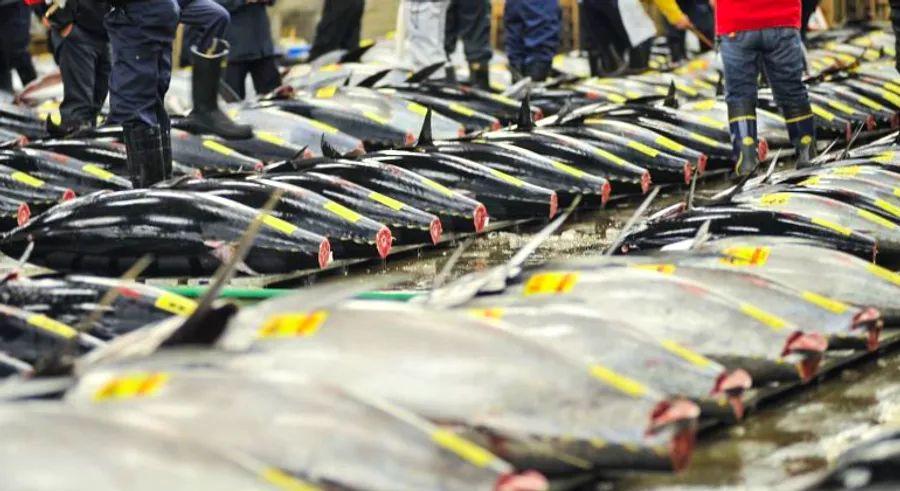The end of an era as Tokyo’s Tsukiji fish market closes its doors

After years of delays and much debate, Tokyo’s Tsukiji wholesale fish market – one of the city's top destinations for international visitors – has officially closed.
The October 6 closure marks the end of a historic chapter for a market that has been a cornerstone of the city since the mid-1930s, once considered the largest fish and seafood market in the world.
The market is relocating to a new site in eastern Tokyo – the Toyosu Fish Market – with operations set to begin on October 11.
The opening of Toyosu Fish Market represents one of Tokyo's most significant developments of 2018, closing one chapter and ushering in a new era for the city.
Why Tsukiji holds such significance for Tokyo

The Tsukiji wholesale fish market opened its doors in 1935, although similar markets have been operating in the area since the early 1600s.
It quickly became the world’s largest fish and seafood market, and one of the most expansive wholesale markets overall.
Beyond being a crucial business center for all things seafood, Tsukiji also evolved into one of Tokyo’s top tourist attractions.
Walking through the inner market, where vendors sell seafood to restaurants and businesses, was an overwhelming sensory experience.
The highlight for many was the early morning tuna auctions, with visitors flocking daily to witness the intense bidding on massive fish.
Equally fascinating was the outer market, a vibrant area surrounding the main building, filled with food stalls and restaurants. Here, visitors could sample some of the freshest seafood – if they arrived early enough.
The relocation itself

Plans to shift the fish market to Toyosu have been in the works for decades, but serious efforts didn’t begin until the early 2010s.
Why the move? The primary reasons involved the aging infrastructure – the buildings were constructed in 1935 – as well as the valuable real estate the Tsukiji market occupies, which was seen as beneficial for the 2020 Tokyo Olympics and beyond.
However, there were several obstacles along the way.
The Toyosu market was initially scheduled to open in November 2016, but its launch was postponed for various reasons, including concerns over soil contamination.
The location chosen for the market was previously home to a gas production plant, and it seemed that the ground had absorbed chemicals from the factory.
After a major cleanup effort, experts confirmed the site was safe for use earlier this summer. Now, the market is ready to open on October 11.
The move, however, continues to stir debate.
Many Tokyo residents were concerned that relocating from Tsukiji would strip the city of an iconic historical landmark, especially as other beloved destinations are slowly disappearing.
The vendors and workers at Tsukiji have been especially vocal, staging protests in the days leading up to the market's final closure.
What to expect at Toyosu

Whether it's embraced or opposed, the move to Toyosu is a reality.
For those visiting Tokyo and eager to experience it, here's what you should know.
The nearest subway stop to the Toyosu fish market is Shijo-mae Station, located on the Yurikamome Line (it's conveniently connected directly to the market, so no need to worry about navigating).
Just two stops from Toyosu Station, which is also on the Yurakucho Line, this area is mostly known for the market. However, Toyosu offers a range of restaurants and shopping centers worth discovering, and the Yurikamome Line takes you to Odaiba, a man-made island in Tokyo Bay.
If you're hoping to catch the Toyosu market at its best before the sun rises, book a hotel in either Toyosu or Odaiba.
Admission to the Toyosu market is free for all visitors. To experience the market at its busiest, arrive before 8 a.m.
The iconic early morning tuna auctions will continue at the new site, starting at 4:30 a.m. every day.
Unlike Tsukiji, where you needed a reservation ticket, now you can simply arrive and find a good spot on the designated viewing platform.
All the dining options are now housed within the market, with around 40 food stalls – most of them brought over from Tsukiji – ready to serve.
Visitors can also head up to the rooftop, which is covered in grass, for beautiful views of the city. The famous Tsukiji shrine is also being relocated to the new venue.
Remember, this is still a fish market, so cold temperatures are typical. Be sure to dress warmly.
In terms of future plans, there's talk of a hotel and hot spring being developed at the market, specifically aimed at tourists, within the next few years.
But what’s the future for Tsukiji?

All tourism-related activities at Tsukiji officially wrapped up in late September, with the inner market permanently closing on October 6. However, the area surrounding the market remains far from empty.
The outer market, home to the food stalls and restaurants, will remain open for business.
To get there, simply head to Tsukiji Shijo station on the Oedo Line or Tsukiji station on the Hibiya Line and experience a taste of Tokyo's history.
You can still join one of the many guided tours around the outer market, where you can dive into the history of Tsukiji and see its impact on the city.
While Toyosu marks the future with its more streamlined, visitor-friendly market, you can still savor a glimpse of the past, at least for a little while longer.

1

2

3

4

5
Evaluation :
5/5